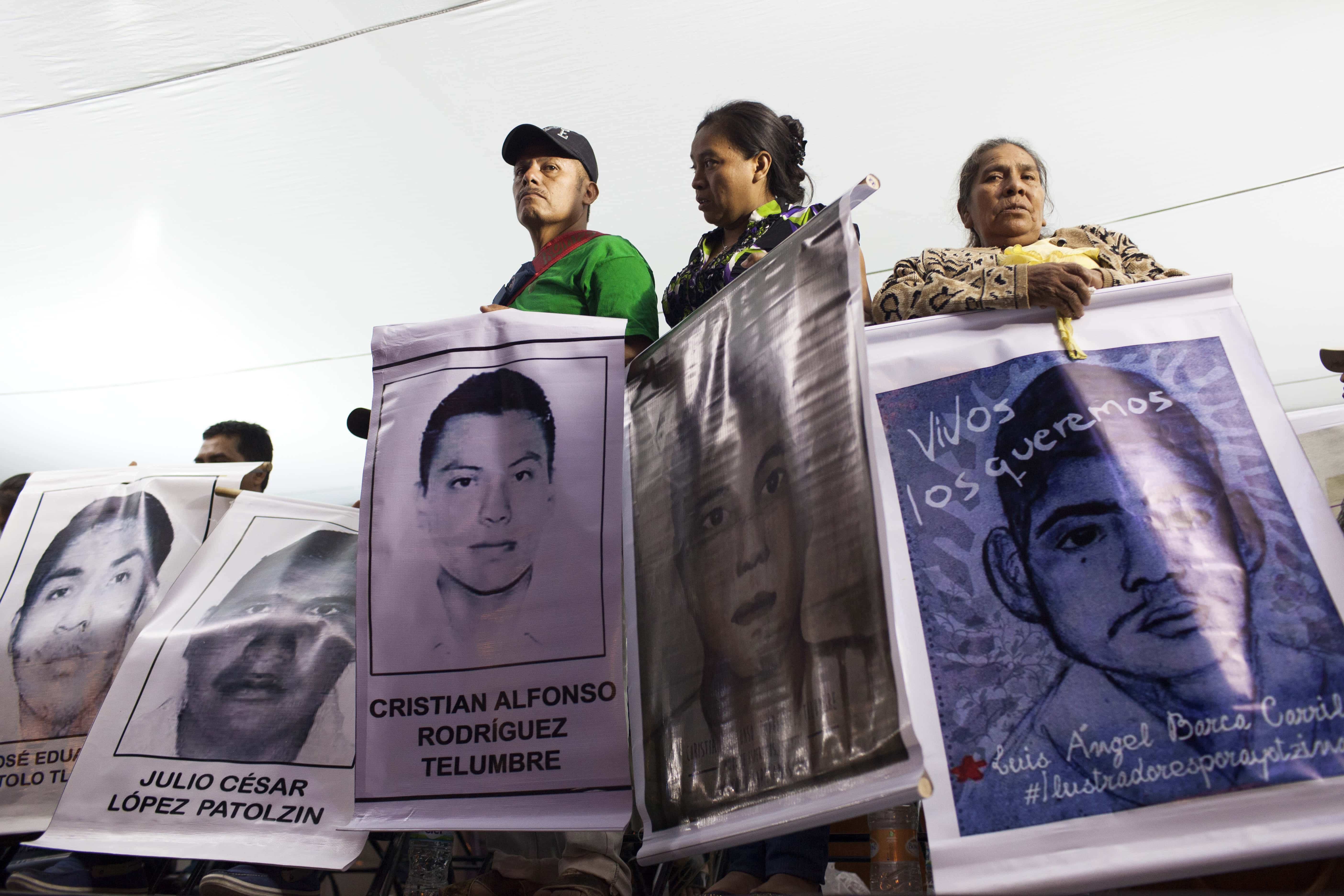Iguala Mass Kidnapping: Were 43 Mexican students massacred as collateral in a drug deal gone wrong?

It's been almost six years since the mass kidnapping of students from the Ayotzinapa Rural Teachers' College in Iguala, Guerrero, Mexico, resulted in international condemnation and social unrest but answers remain frustratingly scarce.
The students had been abducted on September 26, 2014, after they had commandeered several buses to travel to Mexico City as a part of their annual trip to commemorate the 1968 Tlatelolco massacre - an incident when the Mexican Armed Forces opened fire on unarmed civilians who were protesting the Olympics being held in the city and killed hundreds. Their mysterious disappearance sparked widespread concern, though family and friends held out in the hope they would be found safe and sound. Those hopes evaporated on November 7 the same year, when Mexican Attorney General Jesús Murillo Karam announced that several plastic bags had been found by a river in Cocula, Guerrero, containing human remains, possibly those of the missing students. Those remains would stay unidentified, that is, until this past week, CNN reported. Mexican authorities reported a breakthrough in the case after they confirmed they had positively identified the remains of Christian Alfonso Rodríguez Telumbre, one of the 43 male students who were on the buses.
What happened to the students?

Nobody quite knows
Investigations by the former Mexican administration of Enrique Peña Nieto concluded that police attempted to intercept several of the buses by using roadblocks and firing their weapons. The students were taken into custody and handed over to the local Guerreros Unidos (United Warriors) crime syndicate, who then killed them in a garbage dump because they mistook them for members of a rival drug gang. Their bodies were subsequently burned and thrown into the river in Cocula - a theory which was termed as "the historical truth."
Another theory from the Mexican authorities was that Iguala Mayor José Luis Abarca Velázquez, a member of the Party of the Democratic Revolution, had masterminded the abduction and killing with his wife María de los Ángeles Pineda Villa because they wanted to prevent them from disrupting events held in the city. They had fled the city after the incident and, while they were never prosecuted for the students' disappearance, they were later arrested for the murder of activist Arturo Hernández Cardona.
The most popular explanation, however, stems from a case built by investigative journalist Anabel Hernández, who alleged that there was a government cover-up and that the 27th Infantry Battalion of the Mexican Army was directly involved in the kidnapping and murder. She claimed that two of the buses were secretly transporting heroin, without the students' knowledge, and that a drug lord ordered the battalion to intercept the drugs. The students had to be killed as collateral damage so they could not testify about the corruption they had witnessed.
What Next?

On December 3, 2018, Mexico's newly-elected President Andrés Manuel López Obrador announced he was creating a truth commission that would reopen the investigation into the mass kidnapping. The confirmation that authorities have identified Telumbre's remains comes after six pieces of the remains were sent to a laboratory at the University of Innsbruck in western Austria, where they were analyzed for months. Mexico's Attorney General's Office said that the evidence was not found in the landfill or the river, which would once again contradict the Nieto's administration's investigation and its explanation of events. Instead, it was found around 800 meters from "where the historical truth is created." Addressing the recent discovery, Mexico's undersecretary of Human Rights Alejandro Encinas said he hoped it would bring some clarity into the events that transpired that fateful day. "Without a doubt, this marks the beginning of the new route in the investigation that not only collapsed the so-called historical truth but also generates the conditions for the indications, the evidence, the investigations carried out to clarify the events that unfortunately happened in Ayotzinapa," he shared.
Will anybody be held responsible?

At least 80 suspects have been arrested in the case, 44 of whom were police officers, including Iguala's police chief Felipe Flores Velásquez. Then, just last month, authorities arrested José Ángel Casarrubias Salgadoalias. Known by his alias 'El Mochomo,' Salgadoalias is the leader of the United Warriors Cartel and brother of jailed former United Warriors leader Sidronio Casarrubias, who had been arrested in 2014 over the students' deaths.
Mexican outlet Explica reported that Salgadoalias had been on the run since October 2015 and that Mexican authorities had levied a 1.5 million peso ($66,000) reward for any information that would result in his capture. While it was previously believed that Casarrubias had been behind the brutal killings, two alleged members of the United Warriors Cartel are said to have told investigators that it was Salgadoalias who had ordered the students' murders.
One day after his arrest, Attorney General Alejandro Gertz Manero announced warrants had been issued for 46 government officials throughout different municipalities of southwest Guerrero state on charges of forced disappearance and organized crime. An arrest warrant has also been issued for Tomás Zerón, the former head of Mexico’s Criminal Investigation Agency, who prosecutors have accused of planting evidence and torturing witnesses to elicit false confessions. He has since fled the country.
Salgadoalias is currently being held in the Federal maximum security prison of the Plateau, in the Mexican municipality of Almoloya de Juárez, and it will be up to a judge to determine if he will be prosecuted in the Iguala case.